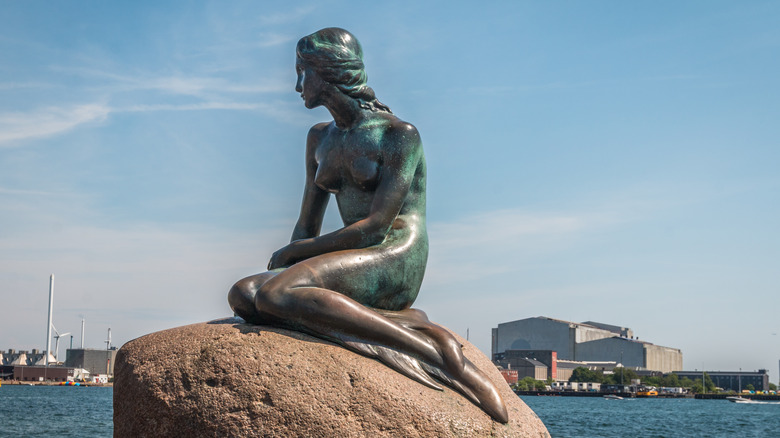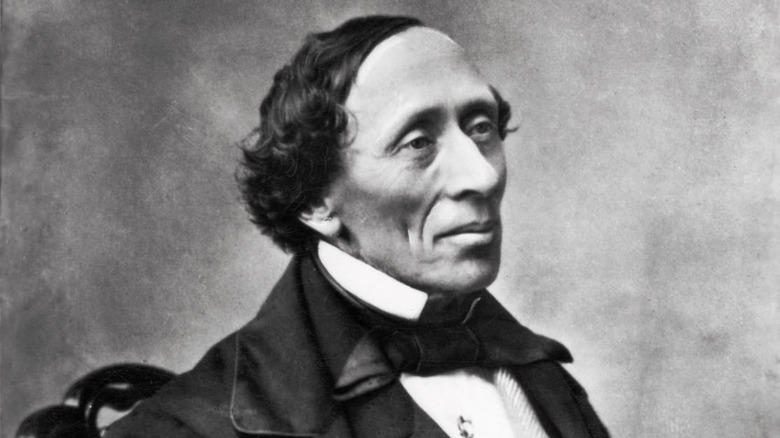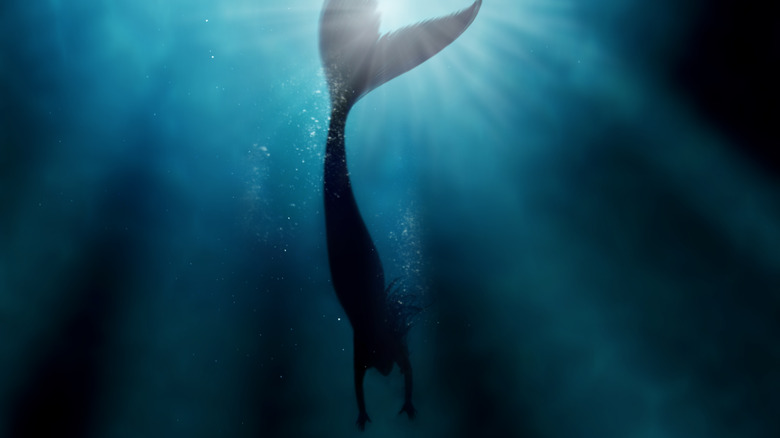The Dark Origin Story Of The Little Mermaid
Over the years, a number of film adaptations have been made of the Hans Christian Andersen fairy tale, first published in the 1830s and translated to English in the 1870s (via Tor.com). Perhaps most famous of all is the 1989 musical animated feature film from Disney, which the live-action remake is based on.
As the story goes, the little mermaid — named Ariel in Disney's movies — falls in love with a human prince. To escape her watery domain, Ariel then makes a Faustian bargain with a sea witch (named Ursula in Disney's telling) to swap her fishy lower half for real human legs so she can live happily ever after on dry land. The catch being the little mermaid must give up her singing voice.
Needless to say, the Disney adaptation of "The Little Mermaid" has a happy ending as it cut or changed a number of plot points in the original. Namely, the little mermaid, who has no name in Anderson's version, loses more than just her voice — she cuts off her tongue, according to the University of Oregon's "Archetypes & Anarchy" podcast. That's just one instance of the darker tone of Andersen's original. Another example of a House of Mouse change: The handsome prince in the source text seems like a jerk.
Andersen's prince enjoys watching enslaved girls dance
In Disney's version of "The Little Mermaid," the prince in the story is named Eric, but in Hans Christian Andersen's version, he's unnamed. Eric is handsome and dashing — unsurprising given Disney's storytelling style — while in Andersen's version, he watches enslaved girls dance, according to a translation of Andersen's story by the Hans Christian Andersen Centre at the University of Southern Denmark. Among the girls is the mermaid, after she seals the deal with the sea witch to emerge on dry land.
A prince watching enslaved girls dance is clearly offensive to modern sensibilities. What's more, in Andersen's version, the mermaid's relationship with the prince is pretty toxic, and he never seems to have any intention to marry her. Which brings up another significant difference between Disney and Andersen: The original fairytale mermaid doesn't even get the prince. He ends up with someone else, and the mermaid dies in what amounts to suicide, unable to stab the prince asleep next to his new bride.
As consolation, the mermaid doesn't become sea foam once she's dead. According to Andersen, mermaids have no soul. Instead, she goes on to live among the "daughters of the air," fragile airborne-based creatures, who, like mermaids, "do not have an immortal soul either, but they can earn one by their good deeds," as Andersen wrote it. This works out, because in the Danish author's version, when the mermaid makes her land-based excursion, she can never go home, anyway.
The fairytale mermaid gives up much more than her tongue
Speaking of deals, the mermaid in Hans Christian Andersen's story gives up much more than her tongue, and the full price she pays sounds excruciating. "Every step you take will feel as if you were treading upon knife blades so sharp that blood must flow," the sea witch says in the source text. The sea witch raises the stakes when she adds, "Once you have taken a human form, you can never be a mermaid again. You can never come back through the waters to your sisters, or to your father's palace."
The magical elixir the mermaid drinks is mixed with the sea witch's blood, and should she fail to win the prince over, she'll die of heartbreak. Furthermore, Andersen's mermaid is guided by a wise grandmother character cut from Disney's version. It's the grandmother who informs her mermaid granddaughter that mermaids, who live hundreds of years, have no soul, and when they die, they transform into sea foam. That's unlike humans, she says, whose souls live forever.
As well as grandma, the mermaid in Andersen's fairy tale has sisters who play a much bigger part in his version, acting something like mythological sirens, luring sailors to their death with their songs. It's easy to see why this all got left on the cutting room floor by Disney in the making of both versions of "Little Mermaid." It's all pretty dark and twisted, with no songs or singing crabs to be found.


